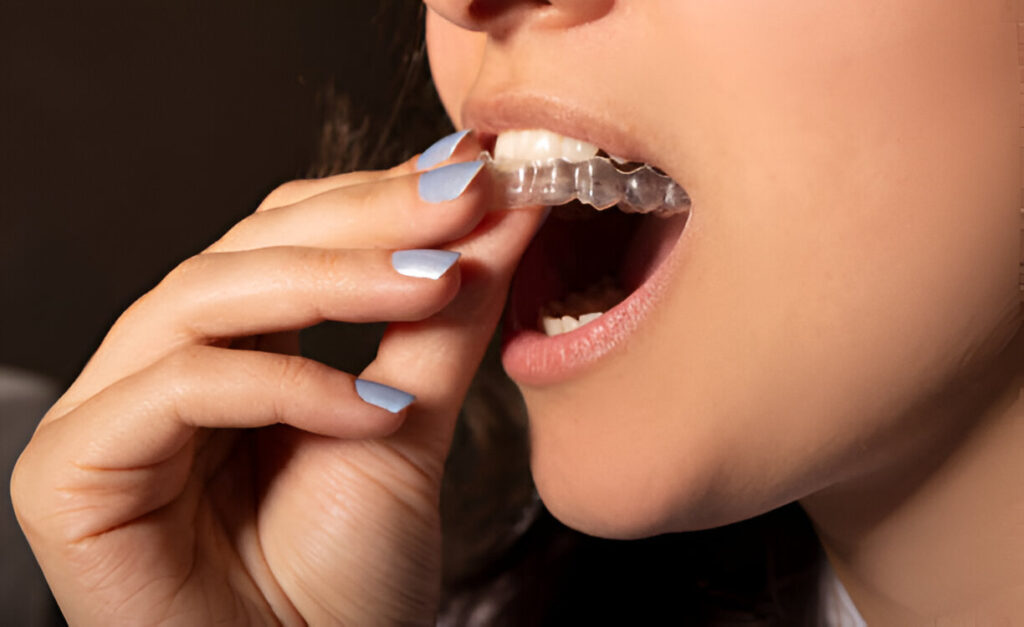If you’re considering braces to straighten your teeth, you’re not alone. Many people in Aberdeen are choosing braces to improve their smiles and boost their confidence. Braces are an effective way to correct dental issues such as crooked teeth, overbites, and underbites. But with so many options available, it can be difficult to know which type of braces is right for you. In this article, we’ll explore the different types of braces available in Aberdeen and help you understand which one might be best for your needs.
Traditional Metal Braces
Traditional metal braces are the most common type of braces used today. These braces consist of metal brackets that are attached to your teeth, along with a metal wire that connects the brackets. The wire is tightened periodically to gradually move your teeth into the desired position.
Metal braces are durable and effective for treating a wide range of dental issues. They can be used to correct severe misalignments, overcrowded teeth, and bite problems. Though they are visible, modern metal braces are smaller and more comfortable than ever before. Many patients also enjoy the option to customise their braces with coloured rubber bands to add a personal touch.
Ceramic Braces
Ceramic braces are similar to traditional metal braces but with one key difference: they use tooth-coloured or clear brackets instead of metal ones. This makes ceramic braces less noticeable and a more discreet option for those who want to straighten their teeth without drawing attention to their braces.
Ceramic braces work the same way as metal braces, but they are more suited for individuals who are concerned about the appearance of traditional braces. They are popular among teenagers and adults alike who want a less obvious solution for correcting their teeth. However, they tend to be more fragile than metal braces and may require more care to avoid breaking.
Lingual Braces
Lingual braces are a more hidden option. Unlike traditional braces that are placed on the front of your teeth, lingual braces are attached to the back of your teeth. This makes them virtually invisible to others.
Lingual braces are a good choice for those who want the effectiveness of traditional braces but prefer a discreet treatment option. They can correct a wide range of dental issues, including crooked teeth, gaps, and bite problems. However, lingual braces can be harder to clean and may take some time to get used to, as they sit on the back of your teeth. They are also more expensive than other types of braces.
Invisalign
Invisalign is a popular alternative to traditional braces. Instead of metal brackets and wires, Invisalign uses a series of clear plastic aligners that are custom-made to fit your teeth. These aligners gradually shift your teeth into place over time.
The biggest advantage of Invisalign is that the aligners are removable, allowing you to eat and drink without any restrictions. They are also much less noticeable than traditional braces, making them an appealing option for adults and teenagers who want to straighten their teeth discreetly. Invisalign is best for individuals with mild to moderate alignment issues. However, they may not be suitable for complex dental cases that require significant movement of the teeth.
Self-Ligating Braces
Self-ligating braces are similar to traditional metal braces, but they come with a twist. Instead of using rubber bands to hold the wire in place, self-ligating braces have a built-in mechanism that holds the wire. This can reduce the amount of pressure placed on the teeth and may shorten the overall treatment time.
Self-ligating braces offer several advantages over traditional braces. They are more comfortable because they cause less friction, and they may require fewer visits to the dentist for adjustments. However, they can be more expensive and may not be as effective for certain complex dental issues.
Clear Aligners for Adults and Teens
Clear aligners are a modern, discreet option for straightening teeth. These are similar to Invisalign, but they may be offered by different dental providers. Clear aligners work by gently moving your teeth into place over time, and like Invisalign, they are removable.
Clear aligners are perfect for adults and teens who need to straighten their teeth but don’t want the noticeable appearance of metal braces. The aligners are made of smooth, clear plastic, so they are almost invisible. Treatment with clear aligners is also more comfortable compared to traditional braces. However, like Invisalign, they are most effective for mild to moderate dental problems and may not be suitable for more severe cases.
Which Type of Braces is Right for You?
Choosing the right type of braces depends on a variety of factors, including your dental needs, budget, and lifestyle. If you have a complex dental issue that requires significant correction, traditional metal braces or self-ligating braces may be the best option. On the other hand, if you want a more discreet treatment, ceramic or lingual braces might be more appropriate.
Invisalign and clear aligners are great options for those with mild to moderate alignment issues who want a comfortable and virtually invisible treatment. However, it’s important to discuss your options with a dentist or orthodontist to determine which type of braces is best for you. They will evaluate your dental health and guide you toward the most suitable solution for your needs.
Conclusion
There are several types of braces available in Aberdeen, each with its unique advantages. Whether you choose traditional metal braces, ceramic braces, lingual braces, Invisalign, or clear aligners, the right option will depend on your specific dental needs and personal preferences. Regular visits to your dentist or orthodontist will help ensure that your braces treatment is progressing as planned, and your smile is on its way to being healthier and more aligned. Don’t hesitate to reach out to a professional to discuss which braces are best for you and start your journey towards a confident smile.
Frequently Asked Question
How long do I need to wear braces?
The duration of braces treatment depends on the severity of your dental issues. Typically, you may need to wear braces for 18 to 24 months. Your dentist or orthodontist will provide a more specific timeframe after evaluating your teeth and treatment plan.
Are there any food restrictions with braces?
Yes, with braces, you should avoid hard, sticky, or chewy foods like caramel, nuts, and popcorn. These can damage the braces or get stuck in the wires. Soft foods and cutting items into smaller pieces can make eating easier while keeping your braces intact.
Do braces hurt when they are first applied?
After your braces are first applied, you may experience some discomfort or soreness as your teeth begin to shift. This is normal and usually lasts for a few days. Over-the-counter pain relief can help manage any discomfort during the initial adjustment period.
How often should I visit my dentist with braces?
You should visit your dentist or orthodontist every 4 to 6 weeks for routine check-ups and adjustments. These visits ensure that your braces are working effectively and that your teeth are moving into the correct position. Regular visits also help maintain good oral hygiene during treatment.
Can I wear braces if I have dental crowns or fillings?
Yes, you can still wear braces if you have dental crowns or fillings. However, your dentist or orthodontist may need to make some adjustments. They will ensure that the braces are applied safely without damaging existing dental work, and they will monitor your teeth during treatment.


